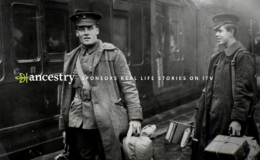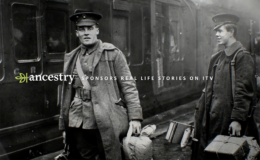

Nancy Battick, Special to the Piscataquis Observer • July 3, 2019
Family associations can be great sources of material for genealogists. They range from informal reunions, where the descendants of a particular couple meet for a picnic once a year, to full-fledged organizations with dues and membership cards and newsletters. The associations run the gamut from Scottish Clans to Mayflower Pilgrim descendants to surname societies and everything in between.
Share or Comment
Family associations can be great sources of material for genealogists. They range from informal reunions, where the descendants of a particular couple meet for a picnic once a year, to full-fledged organizations with dues and membership cards and newsletters. The associations run the gamut from Scottish Clans to Mayflower Pilgrim descendants to surname societies and everything in between.
One thing they almost all have in common is they collect information from their members including pedigree charts, vital records, cemetery and gravestone information, and even DNA studies. This information can be invaluable to a genealogist, as you can imagine.
You can access these by searching for an association that stems from an ancestor in your family tree on search engines such as Google or by seeing if an association shows up on cyndislist.com. Most associations have their own websites. Some of these websites will allow anyone to search for an ancestral name, while others will ask you to join, sign in, and may ask for a small fee to help pay for the website’s costs.
Often the ones that are formally organized will issue regular newsletters with updates about the family members and any new information acquired about the ancestor. Some of these types of associations include Clan Douglas, open to any Scottish Douglas descendant, and the Elder William Brewster Society, open to anyone who can prove descent from the Mayflower Pilgrim. Many of these will offer meeting opportunities where new research information is presented and members are afforded a chance to connect with their distant cousins.
You can also locate family groups on social media such as Facebook. These groups can be closed to the general Facebook user, allowing access only to people with a family connection. Family members can search for ancestral information or post a query for help. Other pages are open to all. Often you’ll find photos uploaded to the page, gravestone and cemetery information, as well as family stories and other tidbits that offer clues or even parts of a genealogical tree. Usually these trees aren’t sourced so take time to check the material for accuracy. Always remember, even the best of genealogists can make mistakes.
If you can’t find a family association that fits with your family tree, consider forming one yourself. You can keep it as informal as you wish, either starting a group on social media or through a website. Most teenagers can help you set this up if you’re technologically challenged. Remember, if you only open it to your siblings and known cousins, you’ll limit the information you receive.
You can do an informal email type of newsletter, plan a reunion with activities for the youngsters and a chance to gather genealogical information from adults. The goal, of course, is to get people with the same genealogical lines together and help fill out a family tree.
In my next column I’ll explore some of the other types of family associations that are of value to genealogists.
Nancy Battick is a Dover-Foxcroft native who has researched genealogy for over 30 years. She is past president of the Maine Genealogical Society, author of several genealogical articles and co-transcribed the Vital Records of Dover-Foxcroft. Nancy holds a MA in History from UMaine and lives in Dover-Foxcroft with her husband, Jack, another avid genealogist. You can contact Nancy at nbattick@roadrunner.com.
Share or Comment
Thank you for reading your 4 free articles this month. To continue reading, and support local, rural journalism, please subscribe.














